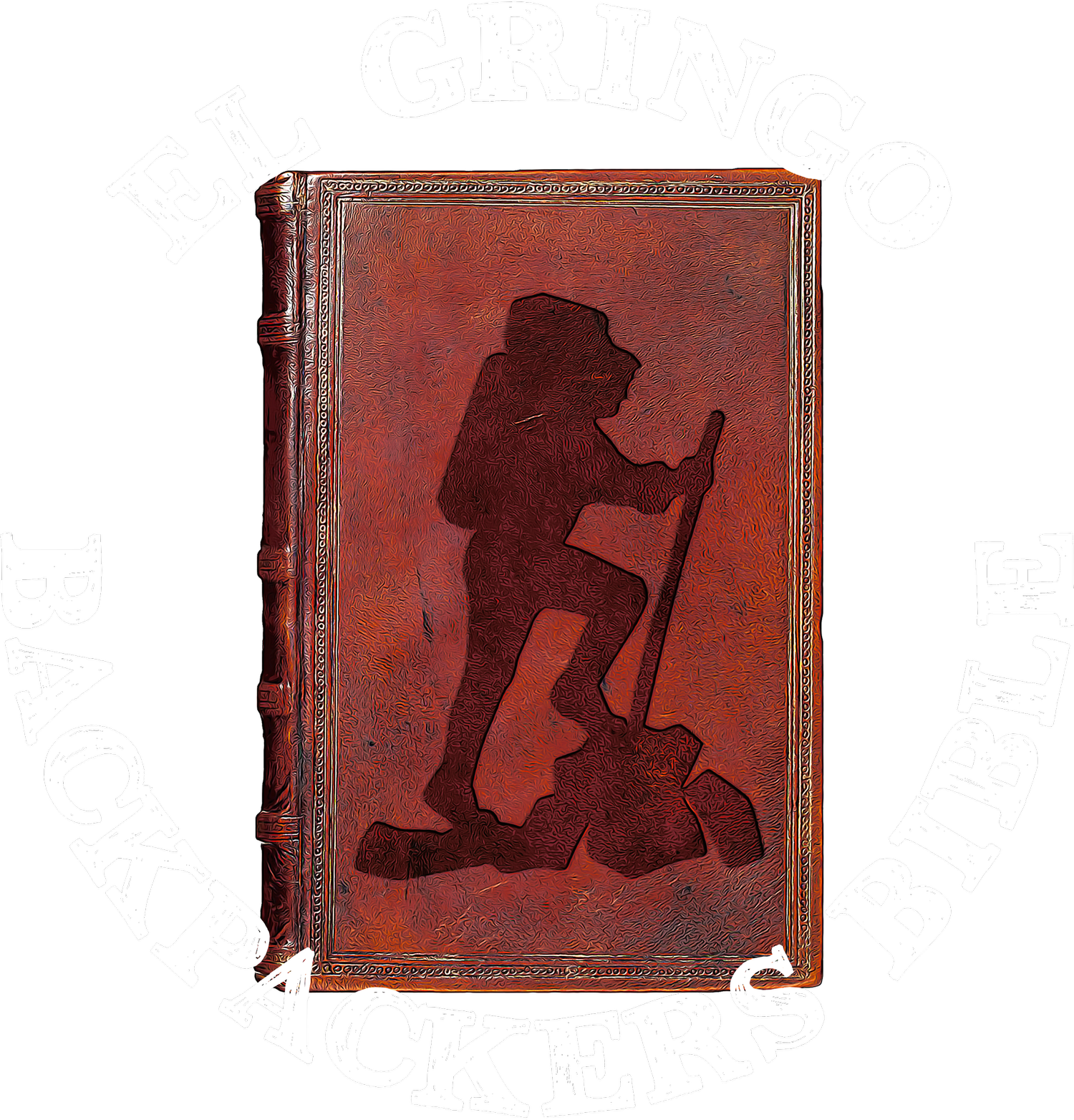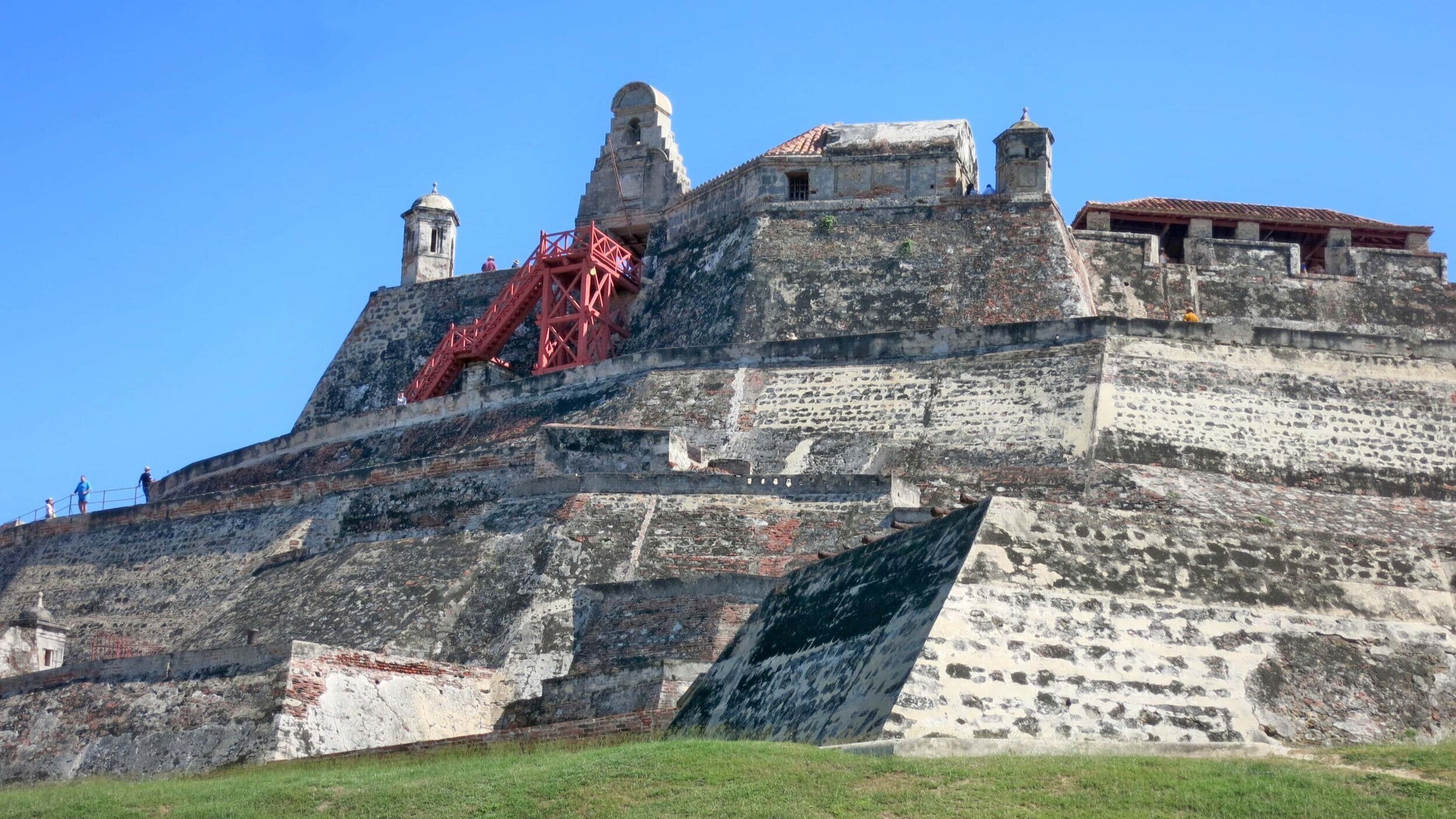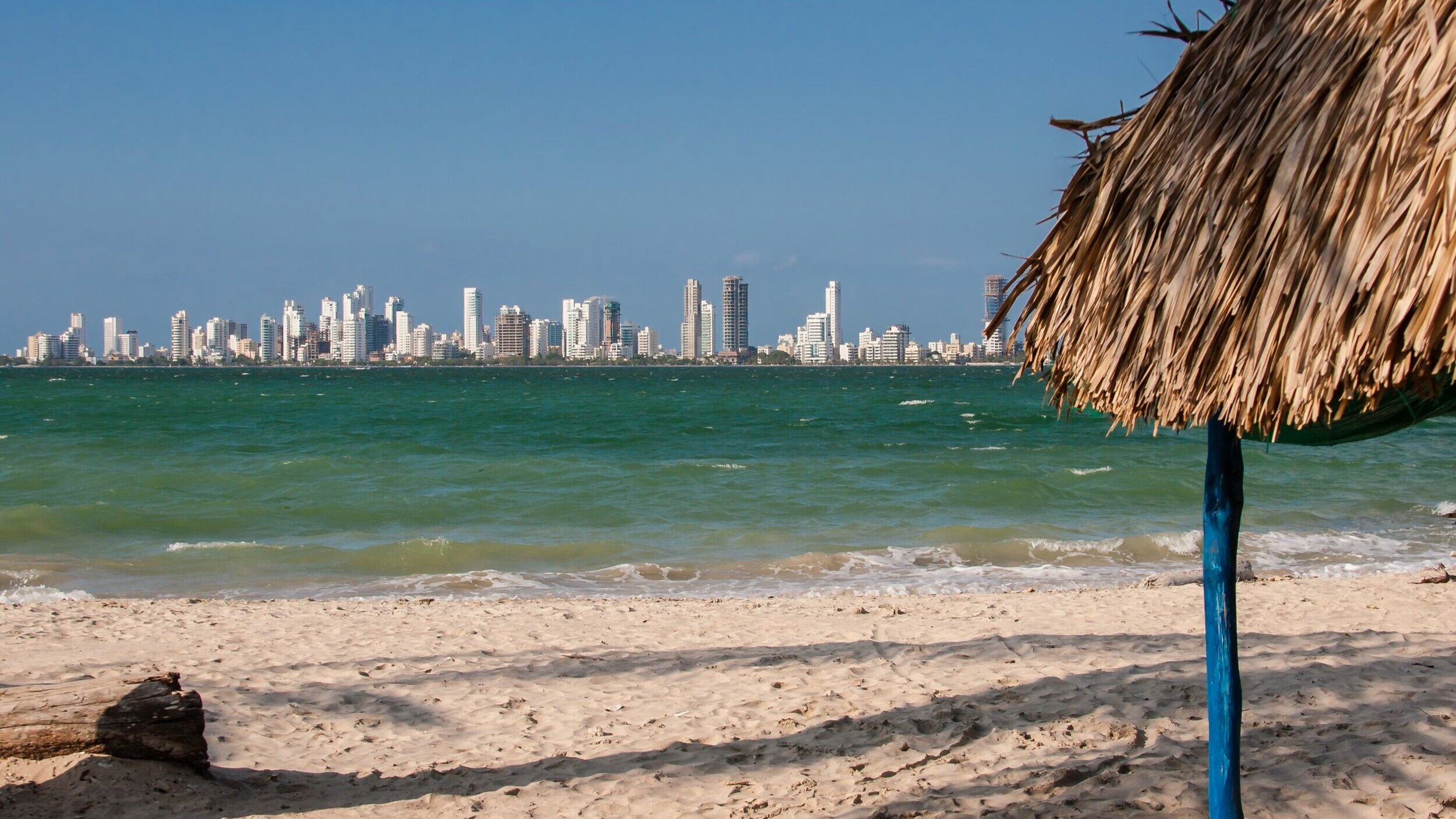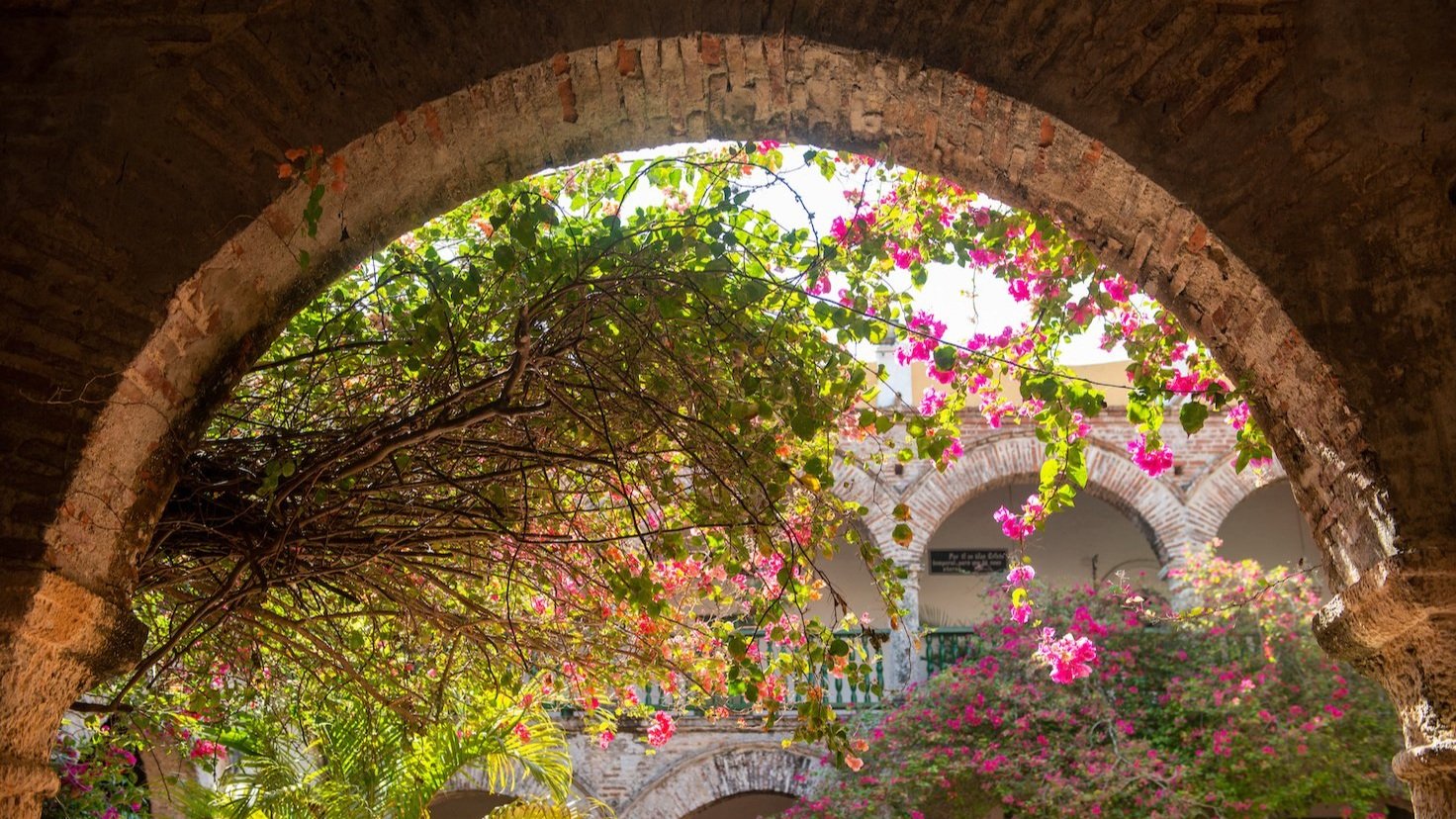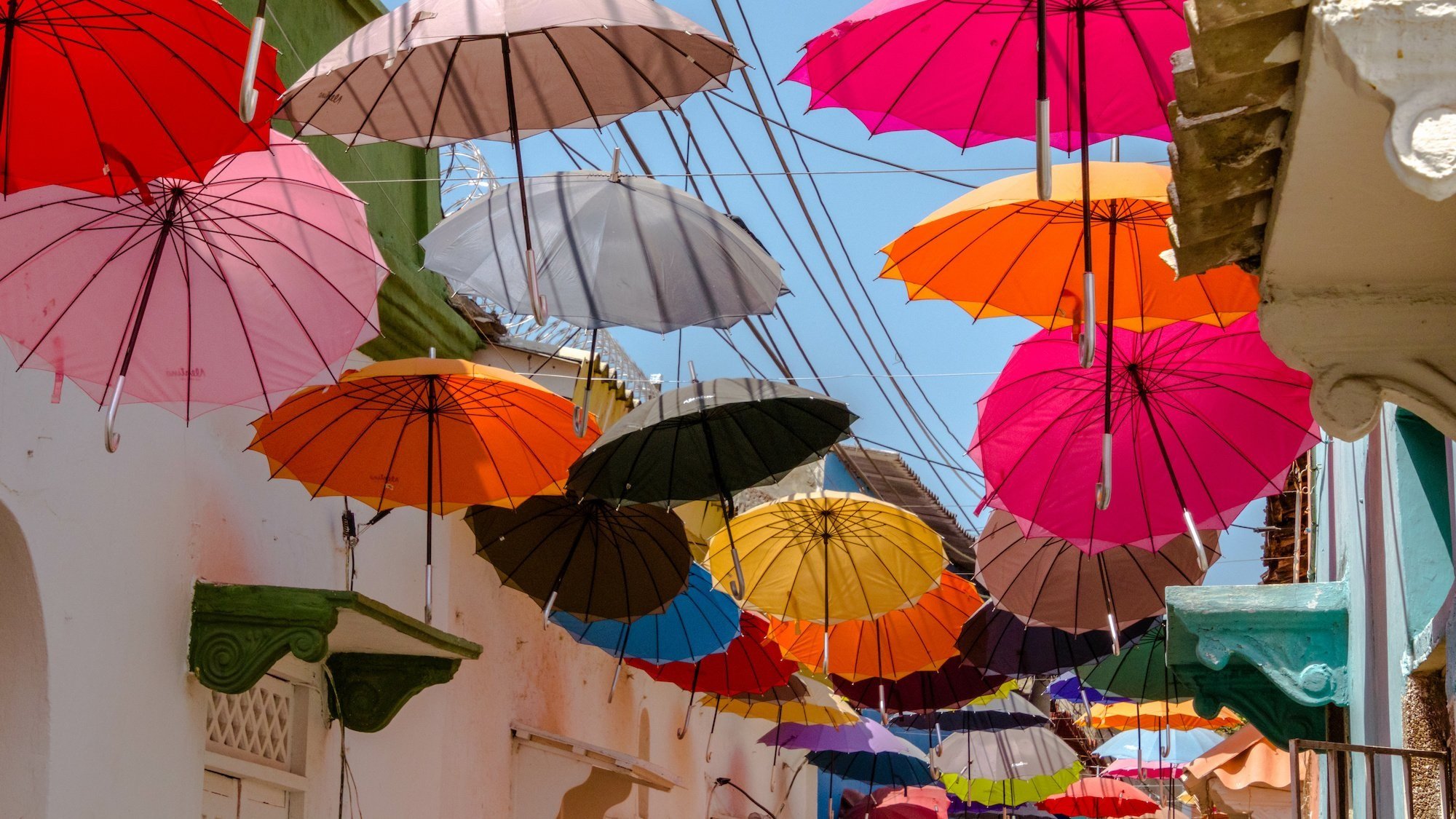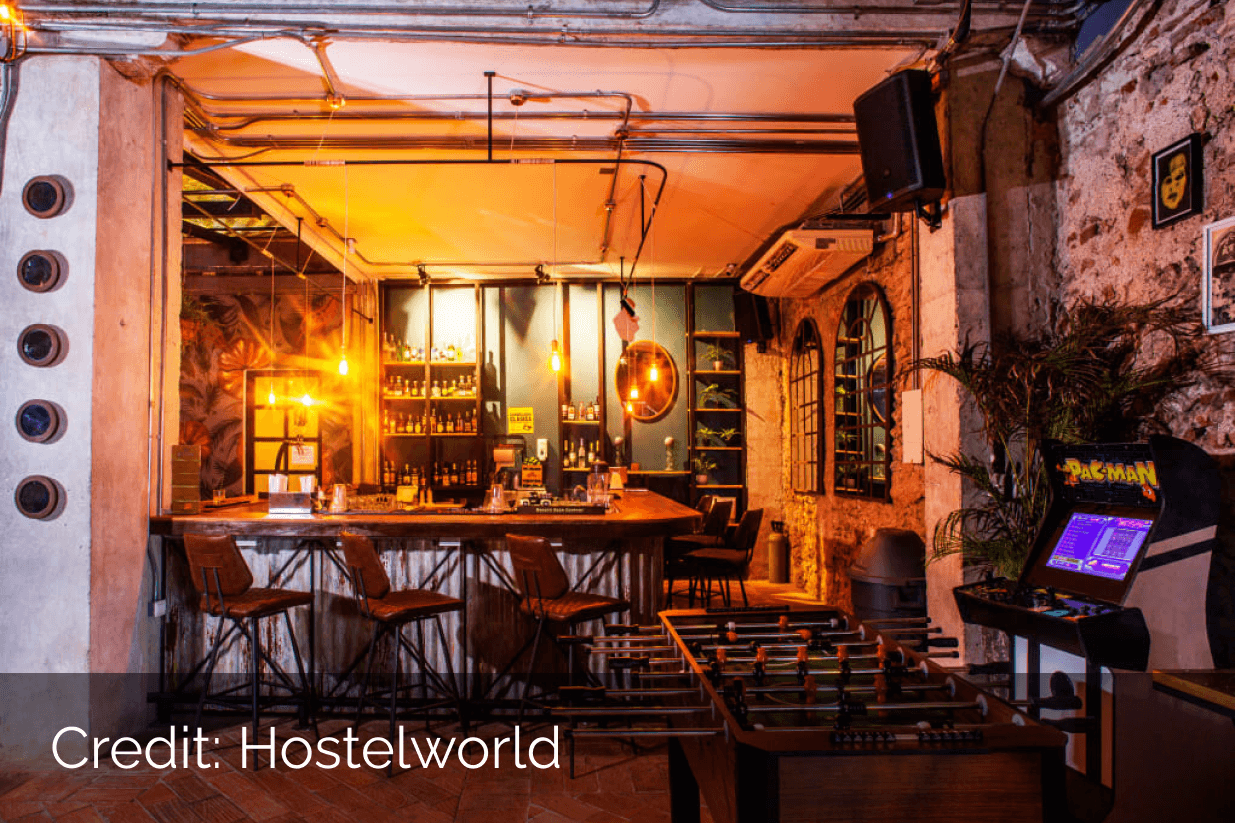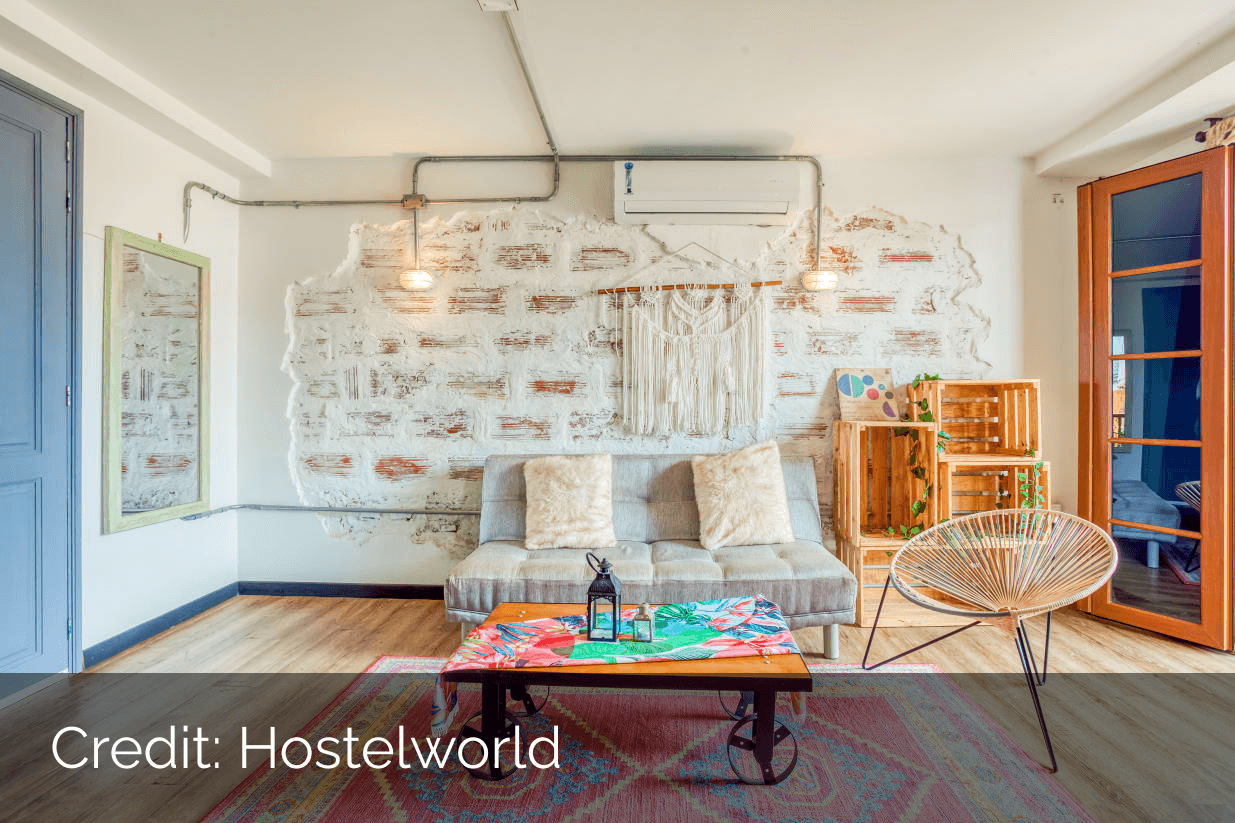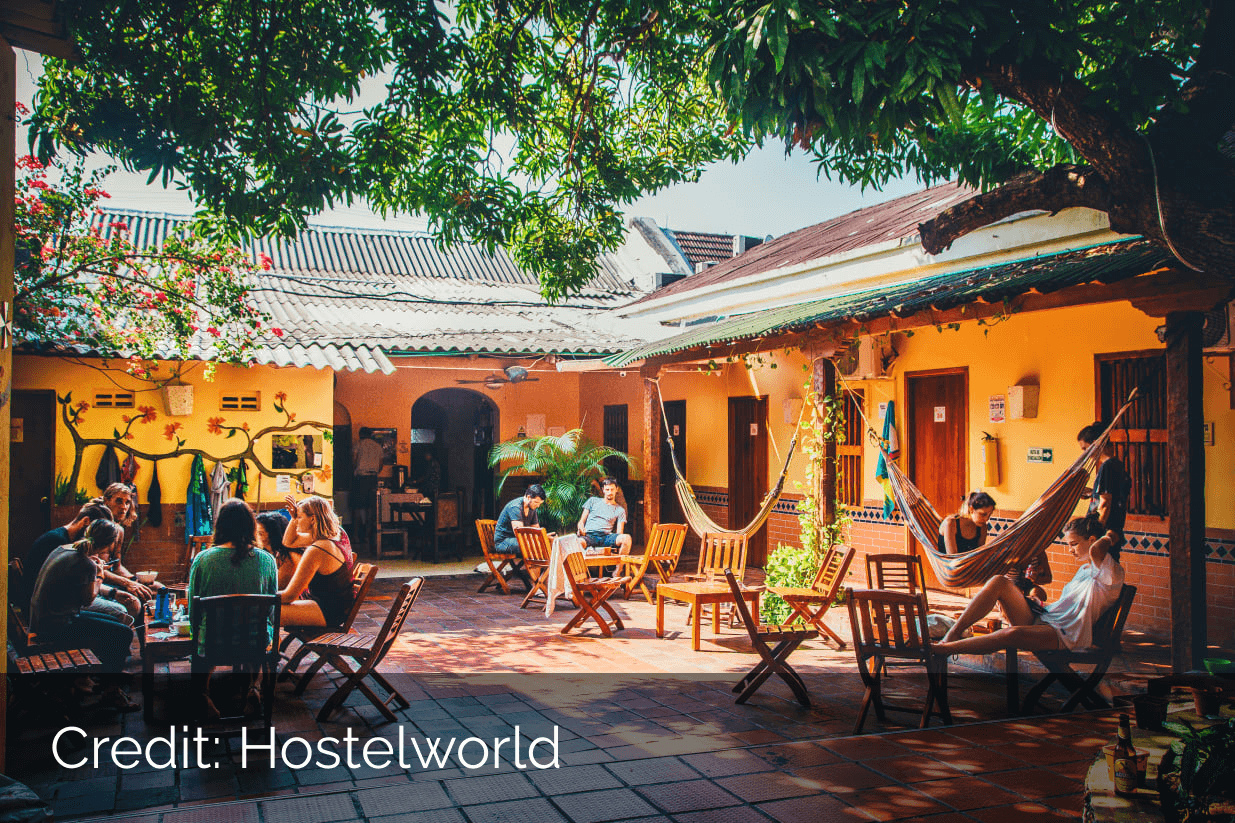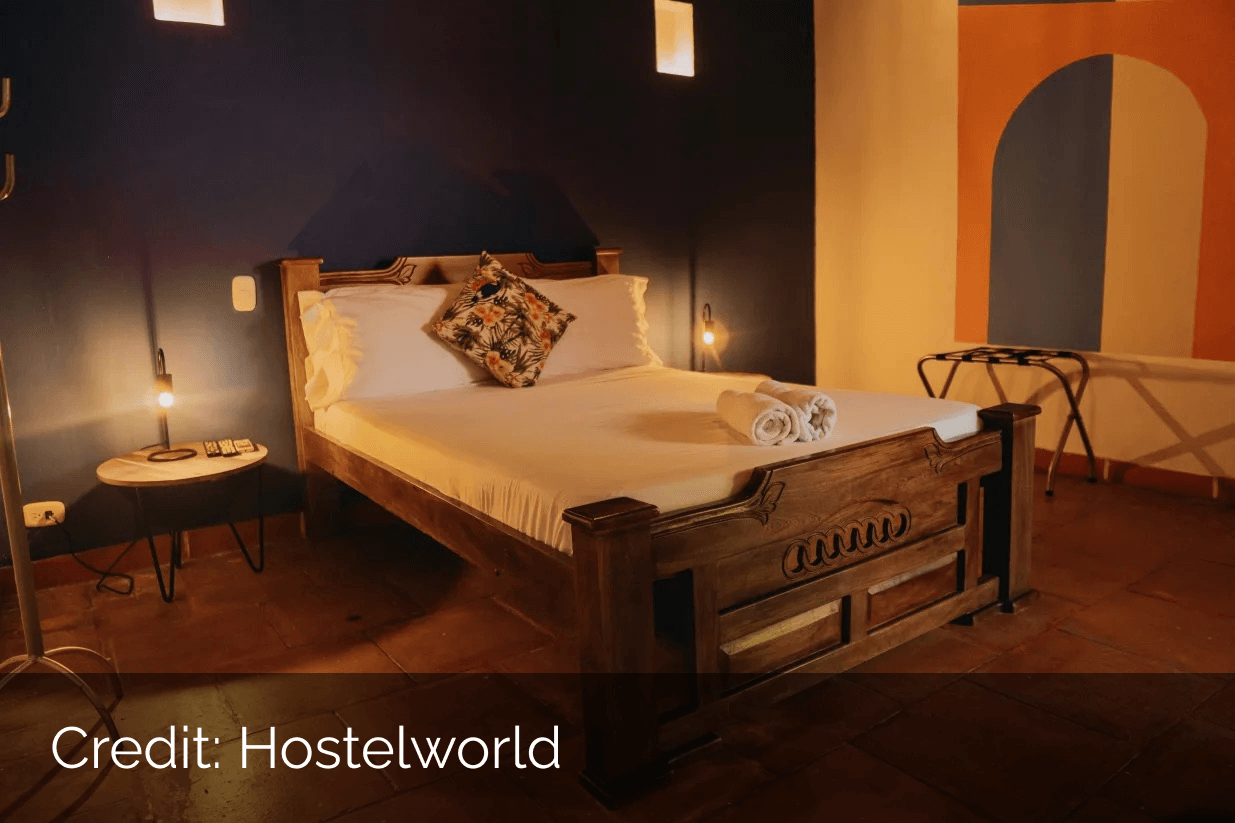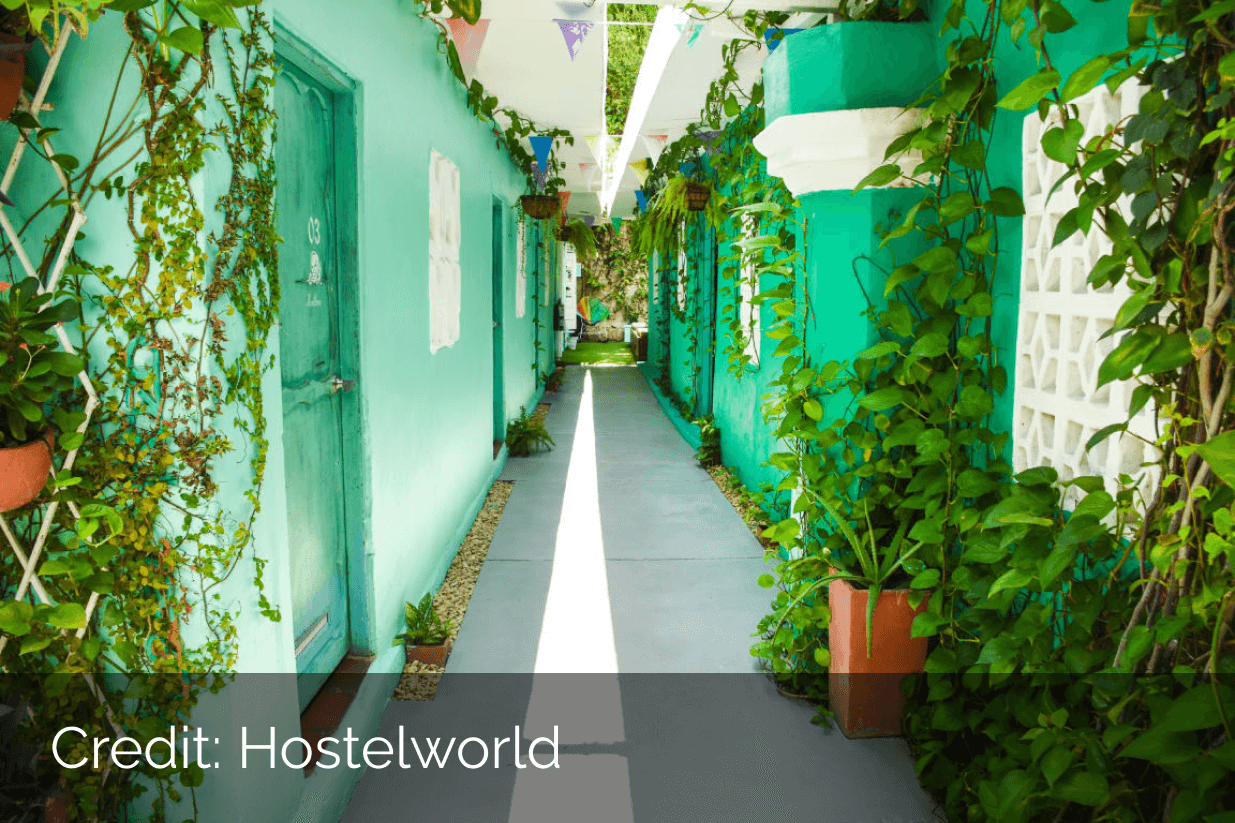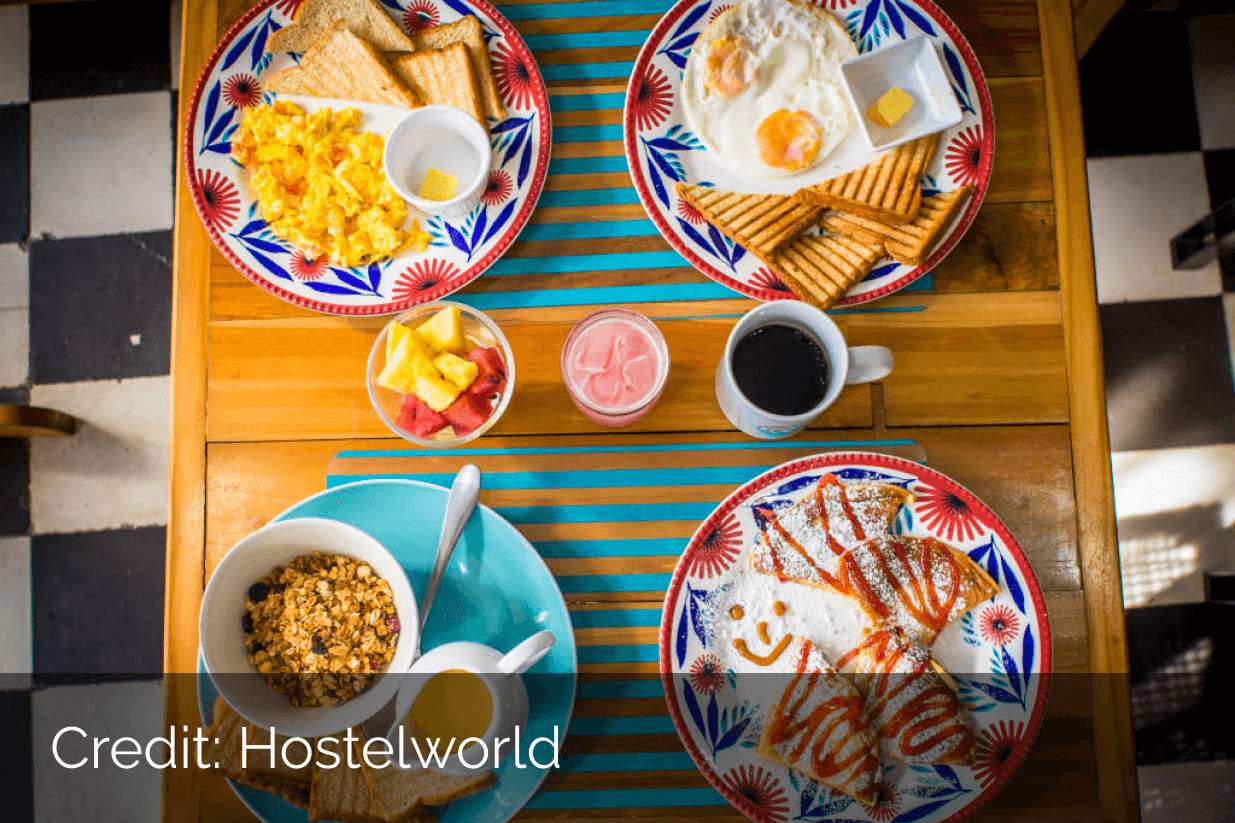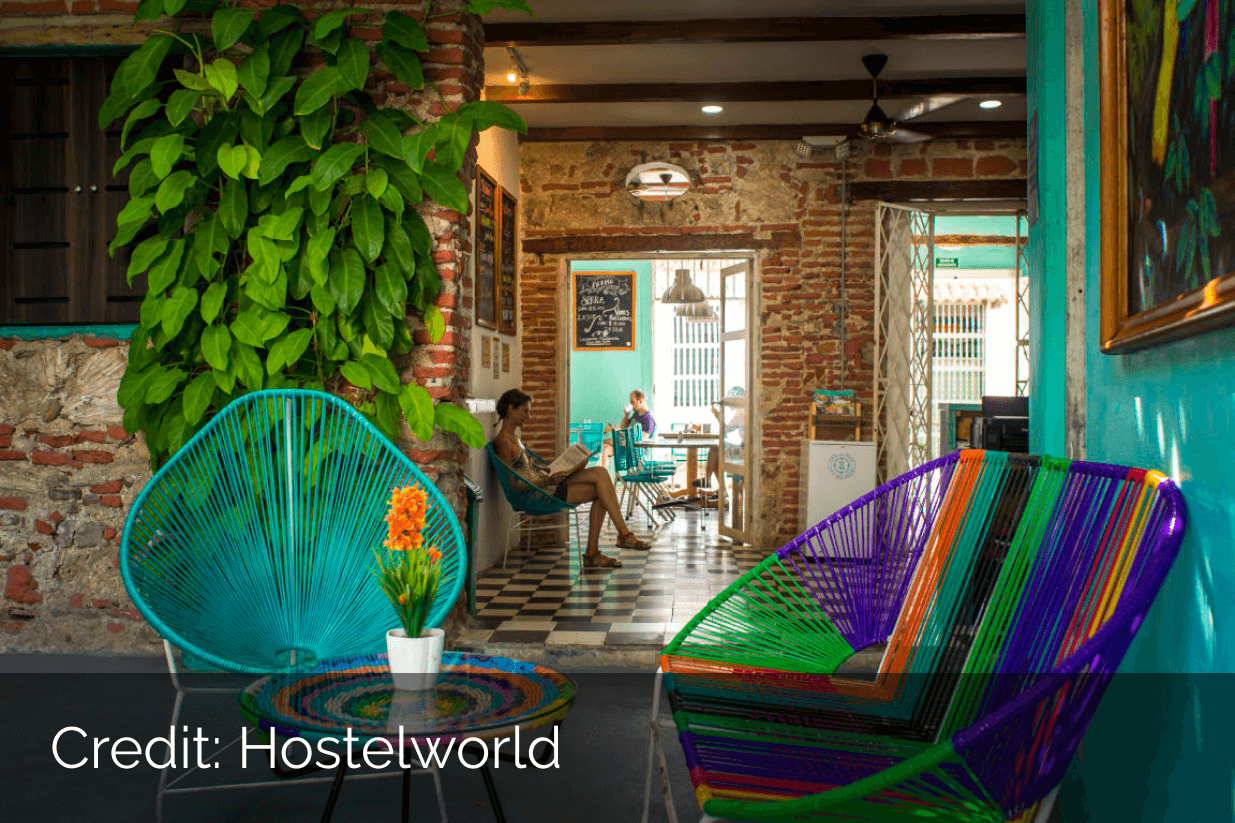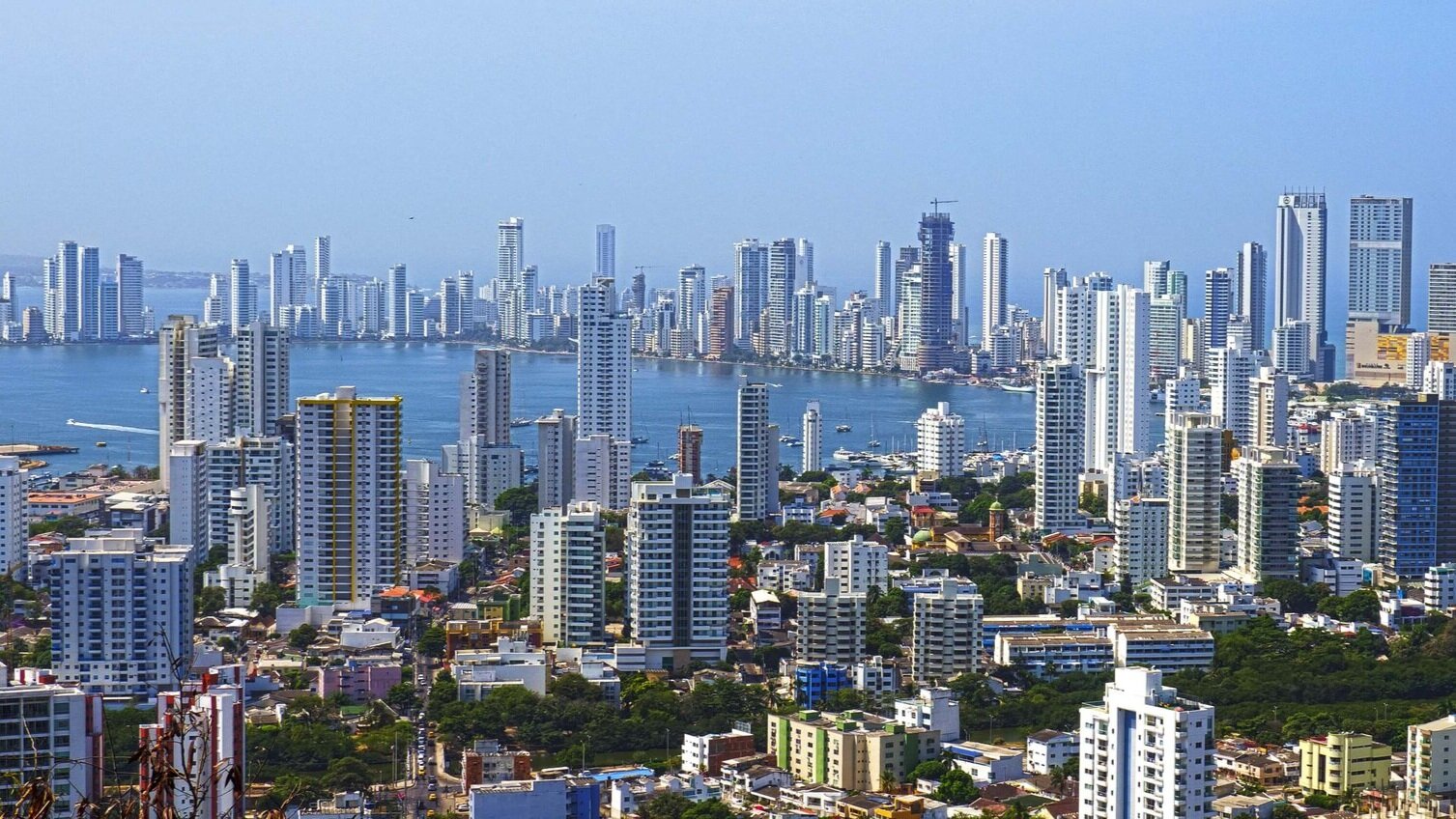
Cartagena, Colombia:
The Ultimate Backpackers Travel guide
An Introduction To Backpacking Cartagena, Colombia
Cartagena is the former capital of the new world and the gateway to Colombia's Caribbean. For many, this picturesque port city is their first taste of Colombia. And what a sweet flavor it leaves.
Colonial roots are evident on every street corner and landmark in Cartagena. Combine this colonialism with a dash of the Caribbean and some Colombian quirkiness, and you get a truly perfect travel destination.
Cartagena became an affluent and vital port city to Spanish rule as the conquistadors swept across the continent. Today, the city has shaken off the chains of a troubled past.
With so much to do and see, it's easy to get lost in Cartagena. Many succumb to its charm and stay for longer than they ever intended.
The city is a melting pot of sights, activities, and cultures that beg exploration. There's a UNESCO World Heritage Site parallel to modern skyscrapers, the largest fortress on the continent, a great food scene, stifling sunshine, and pristine beaches. All of which are matched by the warmth of the city's people.
Many arriving in Cartagena will land at the city's airport. If not arriving by air, Cartagena is still easy to reach. From the capital, Bogotá, you can catch a grueling 21-hour bus for 160,000 COP. From Medellin, the county's second-largest city, the 15-hour bus journey is also 160,000 COP.
Disclaimer: This article contains affiliate links, and we may earn a small commission should you use them, for which we are incredibly grateful. However, the recommendations are still our own and intended to advise on the very best experiences Cartagena has to offer.
Backpacking Cartagena, Colombia: Top Things To Do
Cartagena’s Old Town/Walled City
Cartagena's Old Town has been a UNESCO World Heritage Site since 1984. Within the colorful confines of Cartagena's cobblestoned Old Town, you'll explore picturesque plazas, charming churches, absorbing attractions, and sumptuous street food. One of the best ways to experience the Old Town is wandering without direction. However, there are a few landmarks to head for as you discover this bustling and beautiful part of Colombia.
Torre Del Rolaj
Marking the gateway to Cartagena's old city, Torre del Rolaj is a good pit stop. Grab a coffee and some food from a street vendor before stepping back to soak it all in. Snap some photos before moving on.
Plaza de Bolivar
A couple of streets from Puerta del Rolaj, Plaza de Bolivar is a hub for many of the old city's most memorable delights. Here you'll find Catedral de Cartagena and some of the city's most-loved attractions. From the plaza, pay a visit to Museo del Oro and the Palacio de la Inquisición.
Museo del Oro is a free-to-enter gold museum caring containing 700 artifacts. Most are pre-Colombian, demonstrating the area's wealth before the arrival of the Spanish.
Palacio de la Inquisición, or The Palace of the Inquisition, explores the darker corners of colonial occupation. In another life, the building's purpose was the interrogation and torture of non-Catholics. Historians believe 700 people lost their lives in the building. Today you can learn about the building's past and examine several examples of torture equipment. There is a 20,000 COP entrance fee.
Las Bovedos
Sitting on the outskirts of the old city is Las Bóvedas. A visit to Las Bóvedas is a history lesson as much as a tourist attraction. The site was one of the final colonial structures built in the city. Today, the space comprises boutique shops selling souvenirs. But way back when, it was a dungeon for guarding prisoners. Rumor has it that prisoners would endure sleepless nights during high tide as the water rose to knee height.
Cafe del Mar
As the sun begins to set over Cartagena's old city, many will make a beeline for the Cafe Del Mar, one of the city's best-known haunts. It's the spot to admire spectacular sunsets, located atop the walls of Cartagena's Old Town parallel to the ocean.
There is a price to pay to sit at Cafe del Mar. Everyone has the same idea, and it can get pretty crowded during the evenings—that and the fact that it's expensive and finding a table is tricky.
With that in mind, you may want to pass on Cafe Del Mar. But, if you still want to catch the sunset over the Caribbean, walk a little further along the wall until you find a quiet spot to perch. You may even buy a few cold beers from a local street vendor – a cheaper option than the drinks at Cafe del Mar.
The Pink Sea Of Galerazamba & Volcan de Lodo el Tutomo
A 1-hour bus ride from Cartagena takes you to a natural wonder and off-the-beaten-path gem, Galerazamba. This tiny village is quaint but unremarkable. What attracts travelers here is the sea, which is cerise pink.
This phenomenon is the result of salt mining in the area. The exploitation of salt mixing with various microorganisms yields the sea of Galerazamba's dazzling color. It's an otherworldly spectacle, though one that is only visible between January and April.
Getting to and from Galerazamba is not a full-day tour. So, you may want more bang for your buck while out of town. Luckily, 15-minutes away from Galerazamba is another attraction. That attraction is El Tutomo, the mud volcano.
According to legend, the volcano was once active and used to spit lava. Then, a local priest doused the flames with holy water. The result is the unremarkable-looking 50-foot mound that has entertained travelers and locals ever since. Locals will promise that the naturally heated mud pools have numerous health benefits. At the very least, you'll leave feeling relaxed.
The best way to visit El Tutumo is via guided tour, including transport and a meal. If you intend to go to Galerazamba and El Tutomo, you can find a tour that takes you to both. Such a tour should cost no more than 150,000 COP.
castillo de san Felipe
Cartagena's most fabled landmark, Castillo de San Felipe, rests atop San Lorenzo hill. It's the crème-de-la-crème of colonial fortresses.
As the Conquistadors swept across the continent, Cartagena established itself as a hotbed for commerce in the Spanish Caribbean. Distastefully, trade revolved around stolen gold, tobacco, and slavery.
In the 1600s, Cartagena was the most prosperous port city in the new world. It was also the most frequently looted port in the new world. The city was attacked relentlessly by pirates and British invaders.
The Spanish built Castillo de San Felipe in response to the attacks. Given the scale of the fort, it took nearly a century for the structure to become recognizable as the one seen today.
Despite the completion of the fortress, attacks continued. In 1741, the British came again. Lord Edward Vernon arrived with a host of 23,000 men and 200 ships. The British laid siege in what became known as 'The Battle of Cartagena de Indias.' Under the shadow of the fortress, the Spanish defended the city with just 3,000 men and half a dozen ships. After a month of fighting, the British retreated with their tail between their legs.
Visiting the fortress today is a highlight of any trip to Cartagena. The opportunity to wander the battlements and admire the views from the top is unmissable.
Entrance to the fortress costs 25,000 COP. You can also choose between a guided or self-guided audio tour.
Isla de Tierra Bomba
In Cartagena, you may tire of spending time in the city. So, trade it for a slice of island life on Tierra Bomba, an attractive option for a day trip.
The closest island to Cartagena, just 15-minutes by water taxi, Tierra Bomba is easily accessible from Cartagena's port, Castillogrande. Transport to and from the island will cost 30,000 COP – maybe less if you barter well.
At Tierra Bomba, there's a lot to occupy your time. The island is home to a couple of small towns and several beaches.
Punta Arena is the best spot on the island, and it's easy to see why. The waters are clear, the beach is pristine, and there's a stunning backdrop of Cartagena's skyscrapers across the water.
But don't sell the rest of the island short. There's plenty to explore. At the island's other end, just outside the town of Bocachica, you'll find two of Tierra Bomba's most intriguing attractions, the lesser-known fortresses of Cartagena, Bateria del Angel San Rafael, and San Fernando de Boccachica.
As you explore the island's perimeter, you'll come across more picturesque beaches, namely Malibu Beach, Playa Linda, and Palmarito.
Covento de santa Cruz de la Popa
If we're rounding off Cartagena's most beautiful spots, it's impossible to miss Covento de Santa Cruz de la Popa. The covent, founded in 1607, marks the highest point in Cartagena, offering sweeping views of every angle from a 150-meter vantage point.
Vistas aside, visitors can enjoy a sun-soaked central square or explore the small on-site museum.
The covent came about under the instruction of Friar Alonso de la Cruz Paredes. According to legend, the Virgin Mary came to Friar Paredes in a dream, telling him he must build this incredible gaff atop the hill. If he did, he'd bring Christianity to the land conquered by the Spanish.
Before the covent, locals worshiped an 'evil spirit' in the form of a goat. However, upon building the covent, the Friar fulfilled his promise to the Virgin Mary, securing some nifty living arrangements. Suspicious? Possibly.
Getting to the covent is tricky. Though only 3 kilometers from the Old town, there is no access via public transport. You could walk, but you'd be going through some of Cartagena's dicier neighborhoods. We recommend reaching the convent via taxi, costing about 28,000 COP. The convent also has a 4,500 COP entrance fee.
Getsemanì
Once considered one of Cartagena's dicier neighborhoods, Getsemaní has transformed. Today it reinvents itself as Cartagena's latest hotspot and a haven for hip locals and gringo backpackers.
The lines between Getsemaní and the rest of the walled city are blurred. The allure of the walled city is unquestionable. However, the hidden nooks and crannies of Getsemaní are the most charming and atmospheric places in all of Cartagena.
Walking the streets of Gertsemaní, you'll pass sensational street art, charming cafes, and boutique stores, all within a vibrant and irresistible sense of community.
Plaza de la Trinidad is the best place to spend your time in Getsemaní. It's packed with bars and street food vendors. Head down after a day of exploring, grab a table, perhaps with new friends, buy a round, and settle down for the evening.
Beyond Plaza de Trinidad, Getsemaní is a great place to dance the night away. If you venture into the breezy Caribbean evening, check out Cafe Havana and Bazurto Social.
Cartagena Street Food Tour
Not an attraction in its own right, but a must-do if in town. The food of Cartagena is distinctly Mediterranean, with an unmistakable afro-Caribbean twist.
There is no better way to explore Cartagena's culinary delights than booking a street food tour. With the aid of a local guide, you'll discover the tastes of Cartagena from street food carts, small family-run restaurants, and shops you couldn't hope to find by yourself.
You'll need to pay around 100,000 COP for this tastebud-tingling tour. However, some street food tours can be as much as 300,000 COP, depending on who you book with.
Backpacking Cartagena, Colombia: Top Places To Stay
Selina Cartagena
Selina Cartagena is a somewhat pricey hostel based in Cartagena's Getsemaní neighborhood. The hostel is part of a popular chain scattered across the Americas and beyond, pitching itself as a luxury alternative for flashpackers and digital nomads.
In Cartagena, Selina really couldn't be better positioned. The hostel is five minutes from Plaza de Trinidad – one of the city's best evening spots. Beyond Plaza de Trinidad, Cartagena's famous walled city is ten minutes away on foot, while the city's best beaches are 15 minutes away.
Inside, the hostel boasts modern furnishings, making it feel like a boutique hotel more than a hostel. Then there are the amenities, with the hostel providing everything that backpackers and digital nomads could ever want or need.
Outside is a sun deck, two private pools, and a nightclub-come-bar. Inside, there's a top-notch self-catering kitchen, a movie room, co-working spaces, laundry facilities, and many social spaces. Guests also benefit from free WiFi throughout the property.
The hostel arranges several activities for guests. On-site, there are free yoga classes every morning, art schools, self-defense classes, movie nights, games rooms, live music, and more. Off-site, the hostel can organize city tours, surfing lessons, street food tours, graffiti tours, and more.
For travelers looking to book a private room, Selina offers four options sleeping up to two people and a family room to accommodate four.
Priced at 262,000 COP per night, The Micro is the cheapest private room at Selina. The room resembles that of a ship. Inside, it's fitted with air-conditioning, a wardrobe, sockets near your bed to charge electronics, a full-length mirror, and a double bed. There is a bathroom, but you'll share it with the four other Micro rooms on the property.
One up from The Micro room is The Standard room. The Standard room is much bigger than The Micro. Guests benefit from a private bathroom, air-conditioning, a sitting area, a desk, a wardrobe, a double bed, free toiletries, sockets for charging electronics, and a full-length mirror. The room is priced at 345,000 COP per night.
Next up is The Suite, priced at 410,000 COP per night. The Suite is a big step up from the Standard room. It boasts a private terrace, outdoor furniture, a queen-sized bed, a private bathroom, air-conditioning, an indoor sitting area, a desk, free toiletries, a full-length mirror, sockets for electronics, and ample living space.
Finally, the crème-de-la-crème of private accommodations at Selina Cartagena is the premium Suite +. The room is expansive and fitted with a private terrace, outdoor furniture, a king-sized bed, indoor sofas, chairs, a desk, a private bathroom, air-conditioning, a wardrobe, free toiletries, sockets for charging electronics, and a full-length mirror. You'll have great views of Cartagena's walled city from the outdoor terrace. The room is priced at an eye-watering 540,000 COP per night.
Finally, there is a family room at Selina Cartagena. With room to sleep four, it's perfect for those traveling with a group of friends, provided you can afford it. The room is priced at 510,000 COP per night. It is fitted with one bunk bed, a queen-sized bed, a private bathroom, air-conditioning, toiletries, sockets for electronics, and a full-length mirror.
The private rooms involve eye-watering figures. In some cases, they will be way too much for backpackers. Luckily, there are dorm rooms available at Selina Cartagena, although they are still expensive.
Priced at 76,500 COP, the ten-bed dorm is the joint cheapest room on-site. The dorm has air-conditioning, security lockers, privacy curtains, sockets near your bed, and a full-length mirror. Being a dorm, you will have to share a bathroom with your roomies.
Also priced at 76,500 COP per night are the eight-bed dorms. Like the ten-bed, you'll have to share a bathroom with your roommates. And like the ten-bed dorm, you get air-conditioning, security lockers, privacy curtains, sockets near your bed for charging your electronics, and a full-length mirror.
A step up from the eight-bed dorms, there are 6-bed dorms, priced at 84,000 COP. The only difference between the six-bed dorms and the larger ones is sharing the space with fewer people. Like the other dorms, you'll have access to a shared bathroom, air-conditioning, security lockers, privacy curtains, sockets near your bed for charging your electronics, and a full-length mirror.
Finally, Selina Cartagena's four-bed dorm room is the most expensive dorm on the property. Ideal for those who want to socialize but still value a shred of privacy. The four-bed dorm is priced at 92,000 COP, and space aside comes with all the bells and whistles of the cheaper dorm rooms.
Viajero Cartagena Hostel
You don't often get to stay within a UNESCO world heritage site. Viajero Cartagena is based in the heart of the walled city, with many of the city's landmarks and attractions just a few minutes away.
We wouldn't say Viajero is particularly flash, but it is homely. Outside, the hostel has a patio area, plenty of seating for socializing, a bar, and a courtyard. Inside, you'll find a self-catering kitchen, another bar, air-conditioning, and laundry facilities. Guests also benefit from free WiFi.
The hostel also arranges activities for guests, including salsa classes, live music, and game nights. Viajero also organizes city walking tours, street food tours, and beach days.
Both dorms and private rooms are available at the hostel. Viajero also provides female-only dorms.
For dorm rooms, you have a couple of options. 12-bed mixed dorms cost 39,000 COP per night. 10-bed mixed dorms are priced at 43,000 COP. Eight-bed mixed dorms 46,000 COP. Six-bed mixed dorms are priced at 50,000 COP.
For ladies, both eight-bed and six-bed female dorms are available. Eight-bed female dorms are priced at 50,000 COP. Six-bed dorms are priced at 53,000 COP.
All dorm rooms feature air-conditioning, security lockers, and sockets for charging electronics.
Viajero has several options for private rooms, with rooms built to accommodate between one and four people.
First up is the superior single private, priced at 122,000 COP. The superior single private features a bedside table, electrical sockets near the bed, and access to a shared bathroom.
Twin privates are designed for two, priced at 150,000 COP. You can choose between two beds or a double with these rooms, making it perfect for couples or travel buddies. The rooms feature bedside tables, sockets near the bed for electronics, and access to a shared bathroom.
Finally, priced at 178,000 COP, is the deluxe double private room. These rooms feature bedside tables, sockets near the bed for electronics, and access to a private bathroom
If opting for a private room, you'll start every morning with fresh coffee and a full belly courtesy of the complimentary breakfast.
Casa Del Pozo Boutique Hostel
Casa del Pozo Boutique Hostel could claim to be the prettiest hostel in Cartagena. The hostel is still a little new and under the radar – though we suspect that won't last.
Casa del Pozo is located in the bohemian Getsemaní neighborhood, just a 2-minute walk from Plaza de la Trinidad. The entrance to the Walled City is a 10-minute walk away, and the beach is 15 minutes away.
The hostel has a friendly and lively atmosphere. Though it's hardly a party hostel. The building features charming social spaces, a chic courtyard and pool, a light and airy Netflix room, and a bar. There is even an on-site Italian-themed restaurant.
The hostel runs activities throughout the week. On Tuesdays, there are salsa classes and a karaoke night. Thursday is games night. Then, on Friday, the hostel throws a party for guests.
Casa del Pozo offers both dorm rooms and private rooms.
When booking a dorm, you'll have to choose between a room sleeping four and six. The 6-bed dorm is cheaper, costing 55,000 COP. The 4-bed dorm is pricier at 68,000 COP. All dormitories have air-con, a reading light next to every bed, 2 USB chargers, a laptop shelf, a curtain for privacy, and a storage locker.
Private double-bed rooms are also available, though at a significantly higher price of 285,000 COP. Private rooms are fitted with a 32" TV, Netflix, and security boxes.
Breakfast is included in the price of your stay, regardless of which room you book.
Backpacking Cartagena, Colombia: Top Places To Eat
Beer & Laundry
Beer & Laundry brings a new meaning to the word 'niche.' The clue here is the name. In addition to beer and laundry, Beer & Laundry also serve pizza. Many claim it's the best pizza in Cartagena.
Head down to Getsemaní, laundry in hand, ignore the questioning stares, and wander down to this little gem. A warm welcome awaits you from the friendly English-speaking staff. From then on, it's up to you how you spend your time here.
TThe laundry part of this proposition is fast, cheap, and professional. Your washing takes 90 minutes to 2 hours, costing 30,000 COP for a 5KG load. This leaves ample time to enjoy the free beer when you do your wash.
While you wait, indulging in some delicious thin-crust pizza will set you back 12,000 COP, though the price will increase as you add toppings. A cold beer will cost 7,000 COP. Beer & Laundry is a fantastic way to sit back and relax for a couple of hours at an economical price.
Novo Kebab Grill
Novo Kebab Grill was Cartagena's first kebab joint. Opened by three American friends in 2017, Novo Kebab has become a city-wide favorite.
The restaurant, located in the heart of the walled city, is open from lunch until 11:30 PM. It's perfect for a stop-off during a day exploring or after a night out.
The food is modestly priced, with a kebab costing 19,000 COP. You can also choose whether to have your kebab in a box or wrap. You then get to choose between tender pulled pork, filling falafel, and scrumptious chicken strips before navigating the assortment of toppings and sauces.
The restaurant also offers a selection of snacks to help make your meal all the more filling. Food is available for takeaway and eating in.
Abacus Books and Coffee
If Hogwarts had a Starbucks filled with the hipsters of the wizarding world, it'd look a lot like Abacus Books and Coffee. Except, this being Colombia, the coffee at Abacus is far superior. Here, a cup of joe will cost 5,000 COP.
The cafe is located in a peaceful corner of Cartagena's historic Walled City. As well as serving delicious coffee, Abacus also serves hearty breakfasts and snacks to supplement its charming ambiance.
The bookstore within the cafe offers a generous selection of literature available in Spanish and English at moderate prices.
The place transforms in the evening, with the cafe reinventing itself as a live jazz and wine bar. Wine and cocktails are available for around 15,000 COP.
Backpacking Cartagena, Colombia: When Is The Best Time To Visit?
Being close to the equator, weather in Cartagena, and Colombia in general, depends on the altitude more than the time of year. Being so close to the coast, expect warm temperatures of around 24ºC all year in Cartagena.
Cartagena does experience its share of dry and rainy seasons. However, the rainy season hardly brings monsoons. You can still expect pleasant temperatures and clear skies; the odd shower may even be welcome in the heat. The dry seasons take place between December to March and July to September. Meanwhile, the rainiest months in Cartagena are May and September to November.
You can expect prices to soar during the December to March dry season. This is the high season for tourism and one of the country's major national holidays. Going in March or July-August is your best bet if you aren't keen on crowds but still want to experience Cartagena in all its glory.
Our Map Of Cartagena, Colombia
Where Next?
Isla de Providencia
The Caribbean Coast
Casa en el Agua
The Caribbean Coast
Minca
The Caribbean Coast
You Might Also Like
Travel insurance
The reality of travel isn't what you see on an Insta feed or in a Lonely Planet guide. Things go wrong, and shit hits the fan when they do. Find out why you need travel insurance, what it covers, costs, and where to get it.
Colombia Travel Tips
Is Colombia Safe? What’s Colombian food like? How do I get around? What’s the visa situation? Do I need any vaccinations to visit Colombia? Get the answers you’re looking for and lots more on our Colombia travel tips page.
Ultimate Packing List
Packing for South America can be a nightmare. It's a huge continent, with many countries and climates to plan for. Our packing list covers the budget backpacker, the frugal backpacker, the flashpacker, and the digital nomad.

